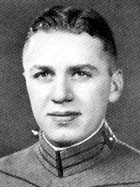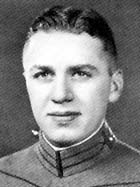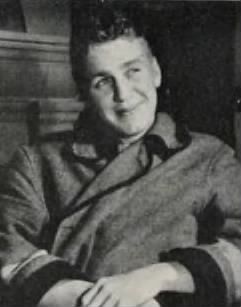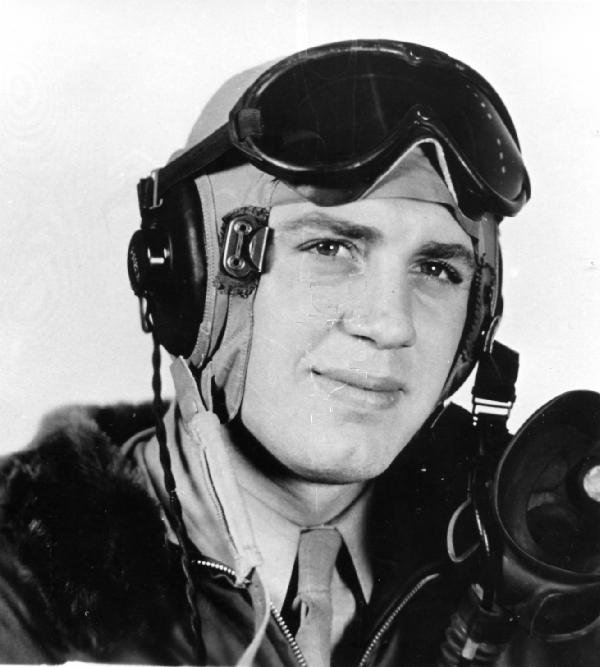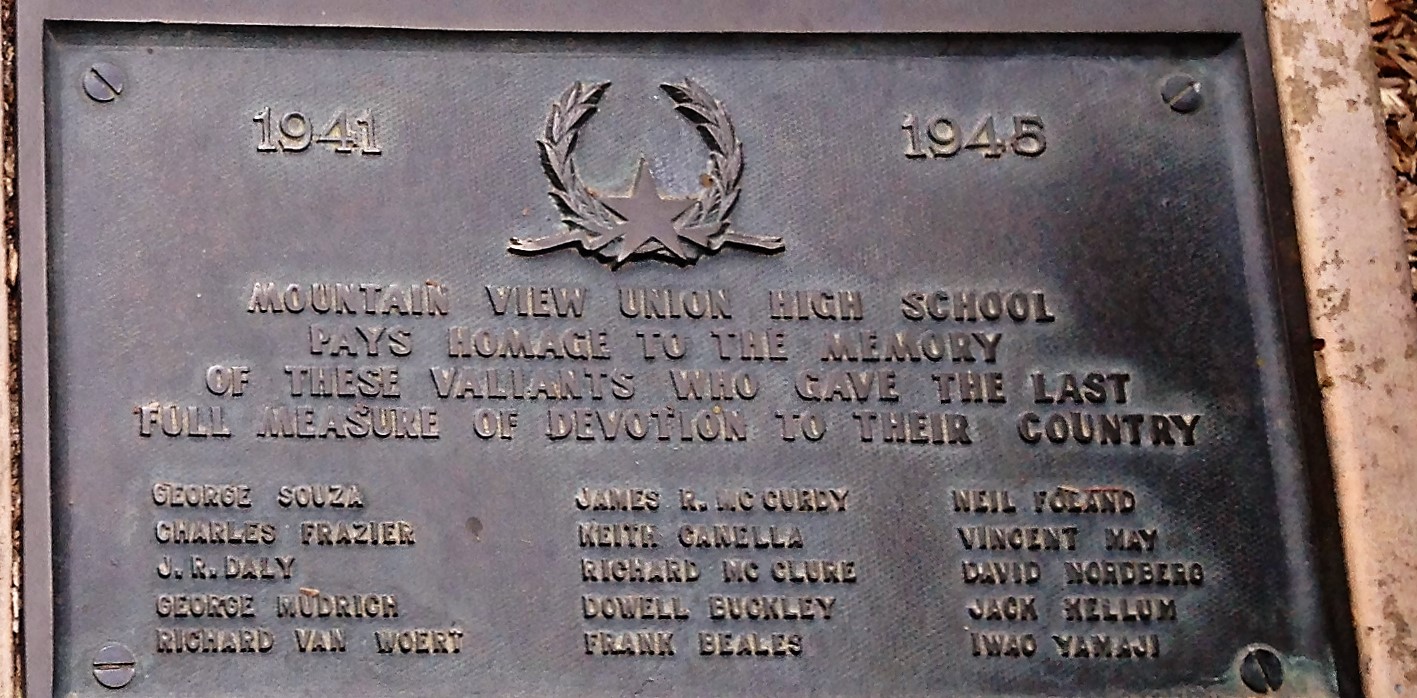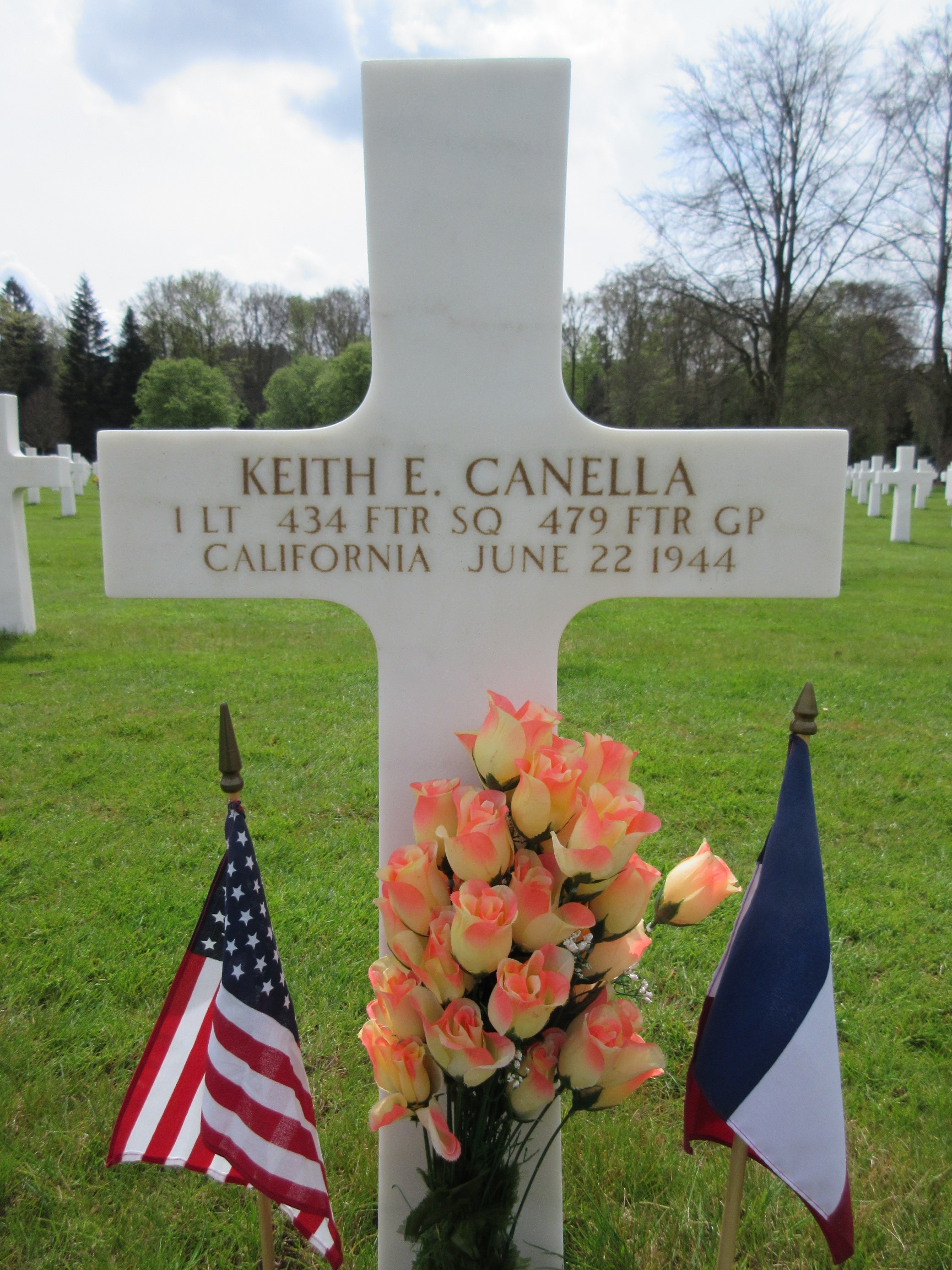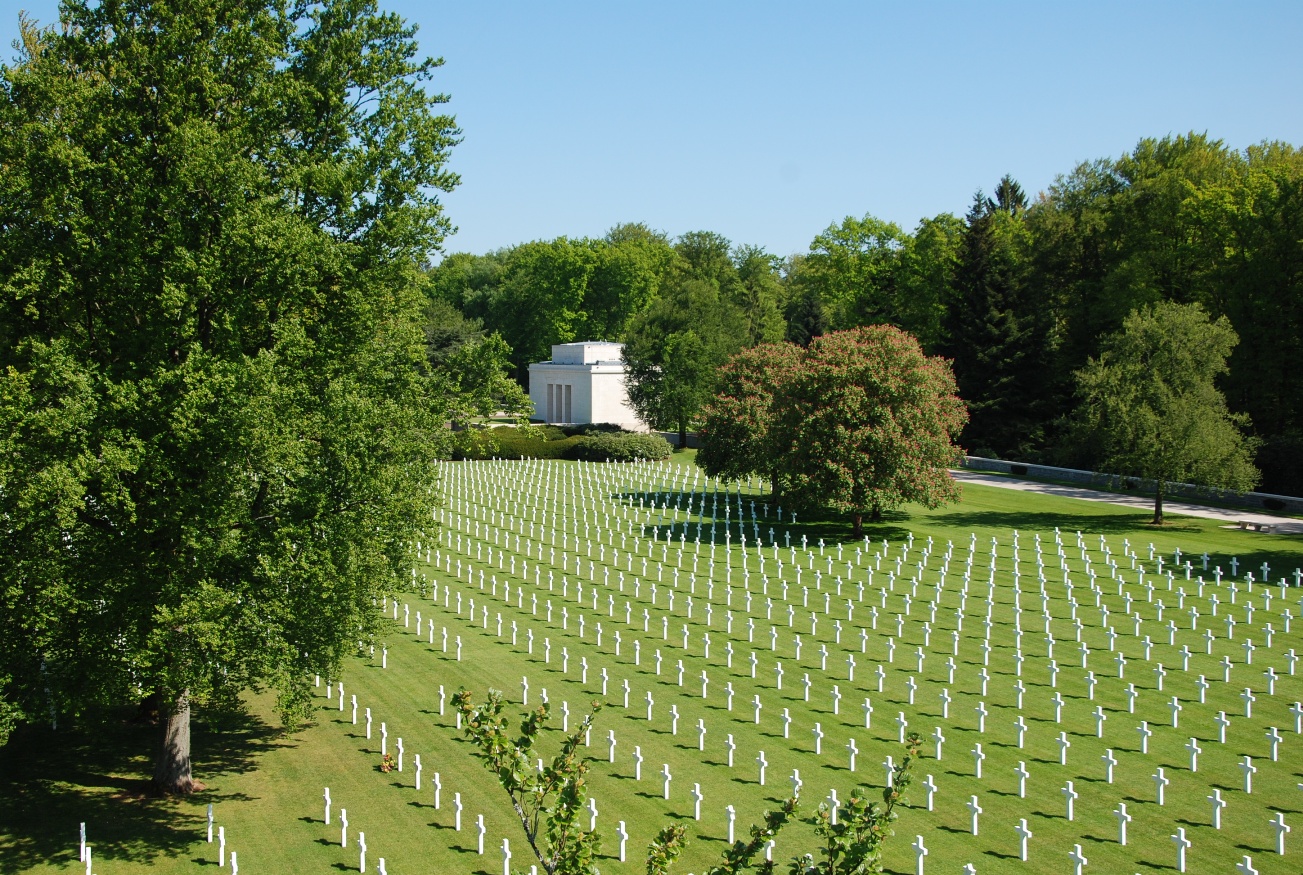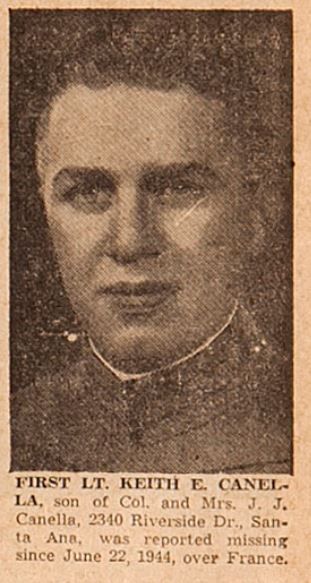Interred in American Military Cemetery, Epinal, France
WHAT GOES INTO the making of a military hero and leader
like Keith Canella? The answer to this question has eluded
personnel specialists for centuries- those who would try to tell
in advance which men will strive to heroism in the face of
mortal peril and which may not measure up. In Keith's case,
some answers are clear while others will never be known.
Intelligence? That he had in great measure. A graduate of high
school at 16, he put in a year at Santa Clara University before attaining USMA age. There his brilliance in mathematics won him a four-year scholarship to Stanford. Then why West Point?
A finely honed sense of duty-parental, national and personal. Keith's father had entered the Army with World War I service as an officer and stayed on in the Regular Army, tremendously impressed with the West Pointers he had known. But his son also grew up to a repertoire of stories of ancient heroes, of service and of sacrifice. Even had Keith gone to Stanford, it is inconceivable that war could have come on without his entering. All the scholarship wouldhave changed was the timing.
Athletic ability? Part was natural, but a neighbor taught his own son and the two Canella boys to play tennis. With Keith the interest stayed and constant practice brought his skill to where
he became captain of our tennis team. Despite winning numerals and his "A," early graduation deprived him of his final season. He also wrestled on "B" squad.
Leadership? Here we find the intangibles that make people different from one another. In Keith there was an effervescence, a sense of humor and fun which constantly bubbled to the surface, and a loving nature of the kind described by Kipling who understood the ties which
bind soldiers so tightly. But hidden behind the strong sense of duty and devotion was a daredevil streak which defied logic. A few stories suffice.
It is said that Keith always wondered what it would be like to parachute, a practice then discouraged by the Air Corps except in dire emergency. So one day in flight training he "neglected" to fasten his seat belt. The first loop threw him out, and he
parachuted! During flight training at Lemore, California, after all had soloed, there was a meeting held to assign instructors for the next 6o hours. Keith and John Courtney were at the
bowling alley; no instructor got assigned. When the class reported to the flight line, rather than request help, Keith and John just signed for a plane and went flying for a month. Then came a flight check. Both did so well they were assigned new instructors and finished the course.
But one of the most amazing tales comes from Wattisham, near Ipswich in England, in May of 1944. Keith was a flight leader in the 479th Fighter Group and brand new P-38s were sitting on the flight line. One of the first to take his flight up was Keith. But he could not resist bringing the flight across the field at low altitude. Glancing back to see the formation, he inadvertently pushed the stick down and the propeller hit the ground. He pulled up but the left wing tip hit
the hangar roof, crashing the plane beyond the hangar in almost immediate flames. A group of pilots rushed to the scene and watched the flames and exploding ammunition in horror, presuming the pilot dead. Suddenly one felt a hand on his shoulder and turned to hear Keith say, "Only a few can do what I just did."
He was not so lucky on June 22nd. The group went to attack bridges near St. Quentin, helping to keep Normandy isolated. Keith's target was a bridge south of St. Quentin at Beautor. On a dive-bomb run, flak hit his plane and made it crash. Forty-nine P-38s took off that day, and 45 returned. Keith did not. He lies in France, buried among his fellow soldiers who perished in that great crusade and mourned by the entire unit. In the words of one, "His enthusiasm for
leadership, combat and outstanding spirit was truly missed. In fact, it was never really replaced."
Shortly after graduation Keith met Mary McClelland of Davenport, Iowa. She was a good friend of Keith's cousin Pat, who married John Courtney. Their meeting was on a fun-filled and snowy night, with Keith on crutches and having to be moved by sled. They arranged to meet in California, where Keith was assigned and where Mary arranged a transfer in her Ordnance job. On 23 August they were married in Santa Ana with eight hundred guests. John Courtney was best man; three other classmates and Claire Duffie also were in the wedding party. After a trip to Arrowhead Lodge, they started housekeeping in Corona del Mar. But all too soon the group left for England and flights against the Continent. In June Keith was killed, and in August John Courtney was shot down and made prisoner. In an irony of fate, Keith and Mary's daughter Carol was born just as her father was hit. The Lord giveth and the Lord taketh away.
Interred in American Military Cemetery, Epinal, France
WHAT GOES INTO the making of a military hero and leader
like Keith Canella? The answer to this question has eluded
personnel specialists for centuries- those who would try to tell
in advance which men will strive to heroism in the face of
mortal peril and which may not measure up. In Keith's case,
some answers are clear while others will never be known.
Intelligence? That he had in great measure. A graduate of high
school at 16, he put in a year at Santa Clara University before attaining USMA age. There his brilliance in mathematics won him a four-year scholarship to Stanford. Then why West Point?
A finely honed sense of duty-parental, national and personal. Keith's father had entered the Army with World War I service as an officer and stayed on in the Regular Army, tremendously impressed with the West Pointers he had known. But his son also grew up to a repertoire of stories of ancient heroes, of service and of sacrifice. Even had Keith gone to Stanford, it is inconceivable that war could have come on without his entering. All the scholarship wouldhave changed was the timing.
Athletic ability? Part was natural, but a neighbor taught his own son and the two Canella boys to play tennis. With Keith the interest stayed and constant practice brought his skill to where
he became captain of our tennis team. Despite winning numerals and his "A," early graduation deprived him of his final season. He also wrestled on "B" squad.
Leadership? Here we find the intangibles that make people different from one another. In Keith there was an effervescence, a sense of humor and fun which constantly bubbled to the surface, and a loving nature of the kind described by Kipling who understood the ties which
bind soldiers so tightly. But hidden behind the strong sense of duty and devotion was a daredevil streak which defied logic. A few stories suffice.
It is said that Keith always wondered what it would be like to parachute, a practice then discouraged by the Air Corps except in dire emergency. So one day in flight training he "neglected" to fasten his seat belt. The first loop threw him out, and he
parachuted! During flight training at Lemore, California, after all had soloed, there was a meeting held to assign instructors for the next 6o hours. Keith and John Courtney were at the
bowling alley; no instructor got assigned. When the class reported to the flight line, rather than request help, Keith and John just signed for a plane and went flying for a month. Then came a flight check. Both did so well they were assigned new instructors and finished the course.
But one of the most amazing tales comes from Wattisham, near Ipswich in England, in May of 1944. Keith was a flight leader in the 479th Fighter Group and brand new P-38s were sitting on the flight line. One of the first to take his flight up was Keith. But he could not resist bringing the flight across the field at low altitude. Glancing back to see the formation, he inadvertently pushed the stick down and the propeller hit the ground. He pulled up but the left wing tip hit
the hangar roof, crashing the plane beyond the hangar in almost immediate flames. A group of pilots rushed to the scene and watched the flames and exploding ammunition in horror, presuming the pilot dead. Suddenly one felt a hand on his shoulder and turned to hear Keith say, "Only a few can do what I just did."
He was not so lucky on June 22nd. The group went to attack bridges near St. Quentin, helping to keep Normandy isolated. Keith's target was a bridge south of St. Quentin at Beautor. On a dive-bomb run, flak hit his plane and made it crash. Forty-nine P-38s took off that day, and 45 returned. Keith did not. He lies in France, buried among his fellow soldiers who perished in that great crusade and mourned by the entire unit. In the words of one, "His enthusiasm for
leadership, combat and outstanding spirit was truly missed. In fact, it was never really replaced."
Shortly after graduation Keith met Mary McClelland of Davenport, Iowa. She was a good friend of Keith's cousin Pat, who married John Courtney. Their meeting was on a fun-filled and snowy night, with Keith on crutches and having to be moved by sled. They arranged to meet in California, where Keith was assigned and where Mary arranged a transfer in her Ordnance job. On 23 August they were married in Santa Ana with eight hundred guests. John Courtney was best man; three other classmates and Claire Duffie also were in the wedding party. After a trip to Arrowhead Lodge, they started housekeeping in Corona del Mar. But all too soon the group left for England and flights against the Continent. In June Keith was killed, and in August John Courtney was shot down and made prisoner. In an irony of fate, Keith and Mary's daughter Carol was born just as her father was hit. The Lord giveth and the Lord taketh away.
Family Members
Sponsored by Ancestry
Advertisement
Advertisement
